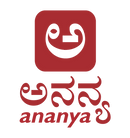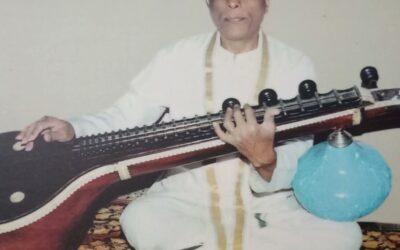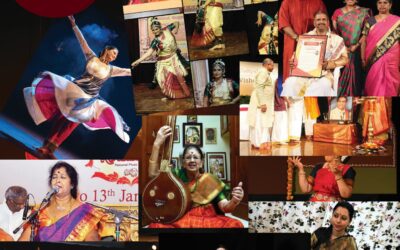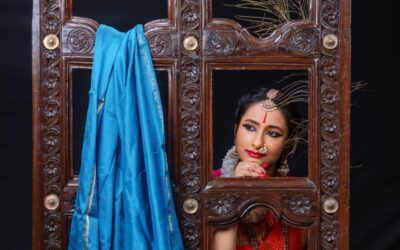Compositions and ragas are preserved only when sung
– Pt M. Venkatesh Kumar
– Ranjani Govind
“I have performed in multiple venues around the world, what I look forward to is response from audiences. If they want dasarapada I gladly give them, if they want thumris, I generously spread them out; if classical is what sangeet sammelans look at where connoisseurs look at purity of music and gharana-based-gayaki I am happily open that,” says Hindustani singer Pandit M Venkatesh Kumar who blends Gwalior and Kirana schools, and hugely admired Bade Ghulam Ali Khan of the Patiala gharana.
“Music should take the course of a flowing river, not stagnant water. One has to discover new paths of learning, and every concert is a different experience. These days most of my concerts too have become riyaz (practice) sessions,” says the maestro adding that his passion to teach music also has lessons of varied kind.
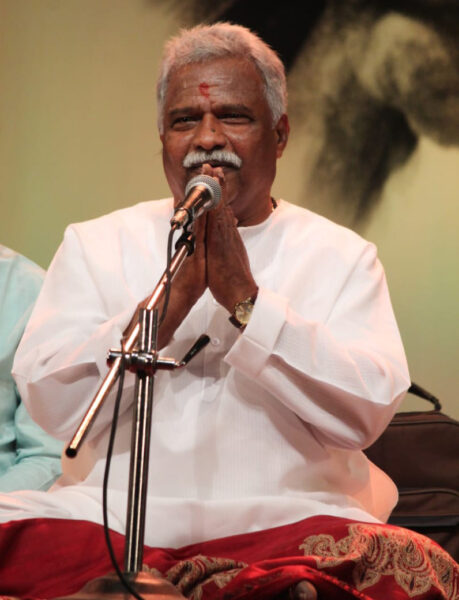 Blessed with a booming voice, Pandit M. Venkatesh Kumar’s signature is his erudite khyals, with equal importance given to devotional Kannada Vachanas and Dasarapadas. The Hindustani classical vocalist conscientiously mirrors his schooling at the Veereshwara Punyashrama in Gadag where he was trained by the visually-challenged Veerashaiva Saint and eminent Hindustani musician Puttaraj Gawai.
Blessed with a booming voice, Pandit M. Venkatesh Kumar’s signature is his erudite khyals, with equal importance given to devotional Kannada Vachanas and Dasarapadas. The Hindustani classical vocalist conscientiously mirrors his schooling at the Veereshwara Punyashrama in Gadag where he was trained by the visually-challenged Veerashaiva Saint and eminent Hindustani musician Puttaraj Gawai.
Venkatesh Kumar, amongst the most modest musicians, comes across as a simple, unassuming achiever, considerately taking up questions one after the other in a special interview during his visit to Bangalore recently. The maestro has recorded multiple devotional and classical CD albums, received a postgraduate degree in music from Gandharva Mahavidyalaya, and served as professor of music at the University College of Music in Dharwad for 33 years until 2015.
Considering the unaffordable plight of the family, it was young Kumar’s focus and fortitude that catapulted him to receive the Padma Shri in 2016 and several more honors as the Kalidas Samman and the State Rajyothsava Award. Isn’t Panditji happy to realize his parents’ dream, and be an inspiration to people who value hard work? “As a young boy yet to enter teens, my family members who found traces of musicality inherent in me, wanted me to concentrate on music. We could not afford a private guru, so in 1966, in the month of Shravana, my maternal uncle, musician Belagallu Veeranna helped us meet Gawai saab which proved a turning point. We were given a rebate and asked to deposit Rs. 65 for a 12-year Gurukula in music! Hard work was the reality, I had no options. Gradually I realized that one has to be blessed with the right guru for marinating yourself fittingly,” laughs Kumar.
From the world of devotional music
 Venkatesh Kumar’s background was rich in fine arts, with agriculturist father Huleppa being a (Janapada) folk singer, open-air theatre artist and leather puppeteer, while mother Parvathamma was a true connoisseur. Young Kumar, one amongst the six siblings, keenly observed his father perform and practice. “I often sang along with him informally,” he says. Raichur and Ballari districts were brimming with Harikathe, and theatre and singing artistes. North Karnataka then generally threw in the trend of musicians taking to devotional music before they got into khyal. Some legendary devotional saint-composers and musicians hailing from the region included Sripadaraya, Vyasatirtha, Vadirajatirtha, Purandaradasa and Kanakadasa. Dharwad district too was known for singers like Pandit Bhimsen Joshi, Gangubai Hangal, Mallikarjun Mansur and Basavaraj Rajguru. While Venkatesh Kumar dedicated himself to devotional music cutting several albums later on, his joie de vivre philosophy was in a sumptuous amalgam of khyal and devotional, just as he was trained in.
Venkatesh Kumar’s background was rich in fine arts, with agriculturist father Huleppa being a (Janapada) folk singer, open-air theatre artist and leather puppeteer, while mother Parvathamma was a true connoisseur. Young Kumar, one amongst the six siblings, keenly observed his father perform and practice. “I often sang along with him informally,” he says. Raichur and Ballari districts were brimming with Harikathe, and theatre and singing artistes. North Karnataka then generally threw in the trend of musicians taking to devotional music before they got into khyal. Some legendary devotional saint-composers and musicians hailing from the region included Sripadaraya, Vyasatirtha, Vadirajatirtha, Purandaradasa and Kanakadasa. Dharwad district too was known for singers like Pandit Bhimsen Joshi, Gangubai Hangal, Mallikarjun Mansur and Basavaraj Rajguru. While Venkatesh Kumar dedicated himself to devotional music cutting several albums later on, his joie de vivre philosophy was in a sumptuous amalgam of khyal and devotional, just as he was trained in.
For the Panditji who hails from Laxmipura in the border Ballari district of Karnataka who later made Dharwad his home, the rigorous in-house training at Gawai’s ashram may have been the path to his national recognition, but young Kumar had run away turning truant in many music classes, unable to come to terms with the strictures laid out for teenagers. “Thanks to Gawai saab, his inimitable ways to put the young ones into their comfort zones was magical. It can prove to be management lessons today. That’s the kind of samskara we grew up with in the ashram. Panchakshari Gawai and Puttaraj Gawai gave life to thousands of down-trodden, visually-challenged children by sheltering and educating them at the Punyashrama,” he says.
Learning methodologies
Not just music lessons and prayers, the approaches and methodologies employed by Gawai have stood by. “We were led into deep 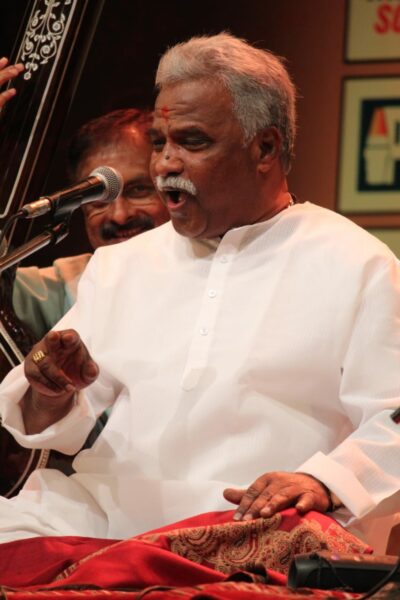 introspection as Gawai explained the melodies, the lyrical connotations, the larger meanings to be inferred, and the ragas and the scales that the songs were clothed in. Different streams of poetry, vachanas and padas were explained for their inherent wisdom,” he says.
introspection as Gawai explained the melodies, the lyrical connotations, the larger meanings to be inferred, and the ragas and the scales that the songs were clothed in. Different streams of poetry, vachanas and padas were explained for their inherent wisdom,” he says.
Panditji explains that when our mind is totally under the influence of these powerful human impressions, they become the determining factors of our personality. “The way we perceived the world was broad and inclusive, as we were acclimatized with a syllabus that saw no social discrimination or blind beliefs. We weren’t led into hard work or practice only, but were made to realize the value behind the strict time-table, or comprehend music and poetry with under-currents of wisdom. I owe everything to the musician-saint Gawai,” says Venkatesh Kumar whose rise to stardom was nearly two decades after he left the ashram. Soon after he was part of national programmes and was A-Top artiste of All India Radio since 1988.
Voice culture
And did he receive any special voice culture sessions that reflect his sonorous range? “It again comes from my guru’s advice to follow riyaaz (practice). Even the raga-time table we followed was tradition-based. We were told to handle ragas according to time, for example, Todi or Lalath in the morning; Sarang, Bhimplas or Patdeep for the afternoon, and Maarva, Purya dhanasri or Yaman in the evening and this was a patterned flow, although one had to widen the raga-repertoire as we grew along.”
But why doesn’t the maestro and professor believe in announcing some of the rare scales he takes up? “Last time I took up Gaud Malhar and Ramdasi Malhar I demonstrated to the curious audience how these scales were older than Miya Ke Malhar which is more popular! Honestly when Gawai saab taught me Ramdasi Malhar, I feared asking him which scale it was! Audiences don’t hesitate to ask, and that’s the power of music today! I am happy to see a good number of youth present in concerts!” laughs the 68-year-old.
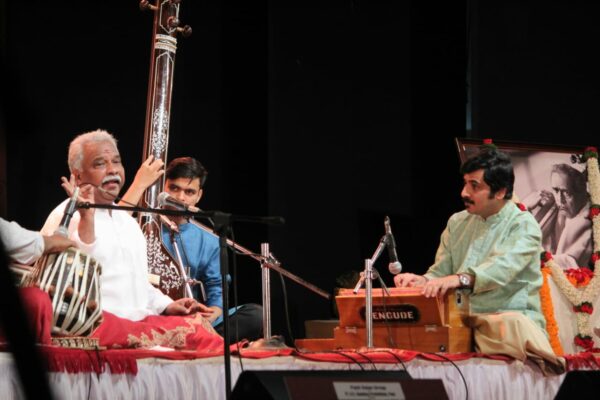 Only after retiring in 2015 did he concentrate on travelling abroad and accepting full-time concerts.
Only after retiring in 2015 did he concentrate on travelling abroad and accepting full-time concerts.
Known for the seamless blending of key elements of the Kirana and Gwalior gharanas, the veteran’s robust style is enriched by characteristics of the Patiala school, especially Bade Ghulam Ali Khan. “We were exposed to variety music and genres in our schooling itself. So the influences from other styles were because of the beautiful platter we received. Consider our initiation lessons: Sarali-Jante-Alankara, and then Swara-geete & Lakshana-geete set in many ragas. After that, Chota Khyal and Bada Khyal in ragas, and then shastriya sangeet Vilambit. In between there would be Vachana and Dasara pada lessons . All this would take 4 to 5 years of schooling,” says Kumar. No wonder his ‘Ondu Baarii Smarane Saalade’ was one Devaranama that set a record for him!
So not just Hindustani or devotional music, Punyashrama gurus – founder Panchakshari Gawai, and Puttaraj Gawai – were proficient in Carnatic and Hindustani. Puttaraj Gawai was a renowned harmonium player and had mastered tabla, veena, sarangi and the seven-stringed-violin. The visually-challenged along with his founder-guru has done a colossal documentation on multiple styles of thumri. “We were taught thumri, tappa, gori, kajri amongst others. Bade Ghulam Ali Khan, Amir Khan, Abdul Karim Khan, DV Paluskar amongst others, each had their own styles. Bade Ghulam Ali Khan would know how to blend ragas into thumris and that made a huge impact on me. I consciously brought this into my stylized presentations, just as my sargam patterns have Carnatic influence,” says the maestro.
And finally after music, receiving awards, moulding students and cutting albums, what more dreams for septuagenarian Panditji? “Sur is God and I am running behind to experience every nuance in the divine. This will be my lifelong quest. Students too have to believe in this relentless pursuit,” he signs off demonstrating memorable phrases in Ramdasi Malhar on request.
*********
